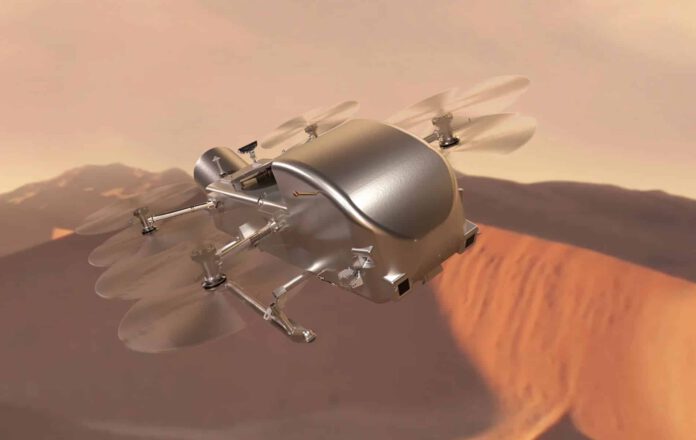
Ambitious Dragonfly Mission Gets a Green Light from NASA
Finally, the momentous approval from NASA stands: The ambitious Dragonfly mission is now officially underway. Exciting times are ahead; in the not-too-distant future, a sophisticated drone will be zipping around Titan, our solar system’s only moon known for its dense atmosphere, liquid lakes, and ‘magic islands’.
This is indeed thrilling news. Given the mystery surrounding Saturn’s rather peculiar moon, there’s a great deal we don’t yet understand. But with Dragonfly – an octocopter capable of sustained flight like a drone – we stand poised to answer many lingering questions about Titan’s ecosystem. The drone will survey several distinct regions of Titan, enabling us to unearth a host of new insights about this alien moon.
Why Titan?
The impetus to study Titan up close largely stems from the suspicion that this moon – with its lush atmosphere, lakes, rivers, and some basic building blocks for life – may bear a lot of similarities to the early days of Earth. As leading theories suggest, this could spark a better understanding of how life developed on our planet. Dragonfly is now tasked with gaining these insights, travelling roughly 175 kilometers across Titan’s vastly different terrains, including its sprawling dune fields and a large impact crater that might have once harboured a cocktail of liquid water and complex organic molecules for tens of thousands of years. Furthermore, Dragonfly will probe the moon’s atmosphere, explore its surface, analyse its chemical interactions, and even search for signs of past or present life.
Budget Concerns
This quest promises much, however the doability of the Dragonfly project has been an issue for some time, primarily due to fiscal concerns. Despite NASA’s enthusiastic announcement and provisional plans for a 2026 launch, with Titan arrival slated for 2034, it quickly became evident that meeting these ambitious deadlines would be challenging. The chief factor was a government funding shortfall faced by NASA between 2020 and 2022, which hindered any significant investment into the Dragonfly project. This led to a call from NASA in early 2023 requesting an update from the Dragonfly team regarding scheduling and budget. The ensuing proposal put forward a feasible 2028 launch, with the entire mission cost penciled in at approximately 3.35 billion dollars.
The Green Light
The project was contingent upon whether NASA would receive ample government funding by 2025 to finance the mission. But now, it seems this hurdle has been surmounted, and the Dragonfly mission will indeed take flight. The launch will, however, take place later than originally planned, in 2028. To compensate for this delay, NASA has allocated additional funds to expedite the journey to Titan by utilizing a more powerful launch vehicle. The mission’s arrival date at Titan in 2034 still holds.
Previous Encounters
The Voyager missions of 1979 and 1980 were the initial explorers to give Titan a closer look, followed by the Cassini space probe in 2004, which significantly increased our understanding of Titan by revealing what lay beneath its dense atmosphere. In 2005, the Huygens probe, deployed from Cassini, made a pioneering landing on Titan and was able to function for roughly half an hour before deactivation due to battery exhaustion.
The Dragonfly Effect
Dragonfly’s scheduled mission on Saturn’s moon is set to last for a significantly longer duration – at least 2.7 years. The choice of sending a drone rather than another lander to explore Titan has been a deliberate one. As a result of Titan’s dense atmosphere, it’s anticipated that Dragonfly will be able to maintain flight with relative ease. Additionally, this airborne explorer will empower NASA to cover large stretches of terrain within a considerably short period and investigate vastly different landscapes – an advantage land rovers like Mars’s Curiosity or Perseverance cannot provide within such timeframes.











